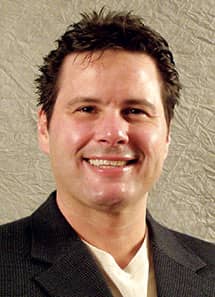Molar Uprighting
Rob Veis, DDS, Los Angeles

Molar uprighting can be accomplished using either a fixed or a removable orthodontic approach. A variety of fixed appliances have been proposed to upright tipped molars. These appliances can be separated into an active and stabilizing or anchor unit. The uprighting of mesially inclined molars can also often be accomplished with a removable appliance.
As always, proper appliance selection and application requires a well-thought-out and thorough diagnosis and treatment plan. During tooth movement, the clinician must accept responsibility for keeping the treated area free of inflammation. This will require regular maintenance throughout treatment. If an implant can be integrated to replace the missing molar, an interim partial or a banded space maintainer bridge would be appropriate methods of stabilization. If a fixed bridge is the treatment of choice, it will act as its own final retainer.
The Slingshot
Richard J. DePaul, Jr, DDS, Mayfield Heights, Ohio

When aligning a second premolar in crossbite: 1) Make mesial-distal space for the tooth with open coil spring (OCS). 2) Place a segment of powerchain on the molar hook through the distal contact and around the lingual of the second premolar through the mesial contact, and tie the chain onto the first premolar. 3) Re-tie the archwire, making sure to keep the OCS in place between the first premolar and the first molar tube. 4) If needed, place build-ups or turbos to remove occlusal interference.
When you are done, the powerchain will look like a slingshot being pulled back and it will provide a facially directed force. The OCS will keep the chain from rotating the adjacent teeth and closing the space you made for the second premolar.
Once the patient is out of crossbite, you can bracket the tooth and finish any additional movement needed to complete the case. Typically, an anterior tooth takes 4 weeks to align and a posterior tooth takes 8 weeks to align.
Bonding Indirect Anchorage Wires from TOMAS Miniscrews to Enamel and Porcelain
John M. Pobanz, DDS, MS South Ogden, Utah

The cervical third of the anatomical crown of a tooth experiences more flexion under occlusal loads. When heavy and repetitive, these loads can even result in abfraction lesions. With this knowledge, a savvy clinician should consider bonding the leg of the indirect anchorage wire on a vertical pattern relative to the clinical crown of the tooth, rather than hugging the gingival margin on a horizontal pattern. This generally results in less failure of the bond (Figure 1).
The Transbond LR lingual retainer from 3M Unitek is a great product formulated to allow micromovement of individual teeth bonded to a lingual wire retainer. Transbond LR is a great choice when bonding a miniscrew-supported anchor wire to the enamel of a tooth intended to be included in the anchorage unit because the tooth will experience micromovement within its periodontal ligament space of the alveolus, whereas the miniscrew will not.

When faced with bonding to a porcelain surface with a bracket, bonded wire retainer, or miniscrew-supported anchor wire, consider Fast Fix porcelain primer from Sullivan Schein. (Jep Pascal, DMD, of Madison, Georgia, introduced the use of Fast Fix for orthodontic bonding at several recent study club meetings.) This material uses an organic acid/silane primer combination that prepares a roughened porcelain surface for bonding with your favorite adhesive primer and paste with as little as 15 seconds of conditioning time (according to the product instructions). This is a huge time-saver relative to other two-step products available.
We err on the side of excess time, allowing the material to sit for up to 60 seconds, resulting in bond strengths comparable to other two-step products that require hydrofluoric acid. This strong acid is one we are happy to eliminate from the operatory, since it can inadvertently be applied to gingival tissue or splashed into a patient’s eyes.
Figures 2 and 3 demonstrate the use of an indirect anchor to facilitate intrusion of anterior teeth in the absence of posterior teeth in one quadrant and in preparation for post-orthodontic restorations. All of the products mentioned were used in this successful clinical example: Heliosit for the microscrew head, Fast Fix and Transbond LR for the lingual surface of the tooth adjacent to the edentulous space, with an indirect wire bonded vertically.











